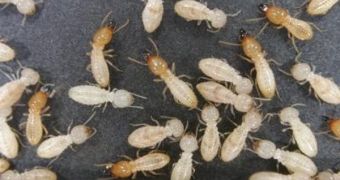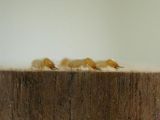Termites are very commonly known among those who have wood homes. The tiny insects can enter the inner structure and start foraging in it until the entire household is in danger of falling down on itself. Experts have known for a long time that two species of termites can easily coexist in the same tree or piece of wood, and naturalists have now finally determined how they manage to keep away from each other. The line of research is especially true for smaller, less aggressive and less numerous termites, which stay away from larger, more voracious colonies.
The drywood termite, Cryptotermes secundus, is a good example of this. Organized in colonies of as little as 200 members, these insects are not well equipped to face their more aggressive competitor, the Coptotermes acinaciformis species, with which they often share the wood. While C. secundus only forages in one tree at a time, a single C. acinaciformis can occupy as many as 20 trees simultaneously. In experiments, scientists have determined that the lesser species has the ability to stay out of the path of the stronger one, but, thus far, how this was accomplished remained a mystery.
“We already knew that chewing termites generate vibrations which they use to determine wood size and quality, so it seemed possible that one species could detect another using these vibrations. We found that Cryptotermes could use vibration signals to distinguish between their own and Coptotermes individuals. They would even respond to recorded signals,” Dr. Theo Evans, an expert at CSIRO Entomology, says. CSIRO is the Commonwealth Scientific and Industrial Research Organization.
“This is the first time the ability to identify a different species using only their vibration signals has been identified in termites. Because vibration signals move rapidly through wood and can be detected from a distance, the vulnerable species have an eavesdropping advantage as they can detect their aggressive relatives without having to come into contact with them,” the expert adds. Scientists from the University of New South Wales at the Australian Defense Force Academy have also participated in the new experiments.
Details of the study were recently published in the respected scientific journal Proceedings of the Royal Society B.

 14 DAY TRIAL //
14 DAY TRIAL // 
